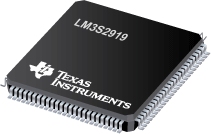PDF, 1.7 Mb, 修订版: A, 档案已发布: Aug 15, 2012
Protection of code and IP in a microcontroller's Flash memory has always been an important consideration for the system designers. StellarisВ® microcontrollers feature a code protection mechanism that enables developers to protect their code and IP in the end application, while providing the flexibility to upgrade the firmware using a boot loader. This application report describes using Flash p
PDF, 95 Kb, 档案已发布: Jul 7, 2009
This application note provides three methods for erasing and programming Flash memory: the StellarisWare Peripheral DriverLib, software polling for completed updates, and interrupt-driven updates.
PDF, 278 Kb, 修订版: B, 档案已发布: Feb 4, 2013
PDF, 170 Kb, 档案已发布: Jul 7, 2009
This application note describes ADC sampling and configuring Stellaris microcontrollers through the StellarisWare Peripheral Driver Library or through direct writes to the device's control registers.
PDF, 162 Kb, 修订版: E, 档案已发布: Sep 24, 2013
is document addresses design items to be aware of when migrating working designs among Fury-, DustDevil-, Tempest-, and Firestorm-StellarisВ® microcontrollers (MCUs) and Tivaв„ў C Series TM4C123x-class MCUs. Topics covered include both software and hardware issues as well as feature changes and enhancements. All software issues are comprehended in the Driver Library APIs. As a result, syste
PDF, 120 Kb, 档案已发布: Jul 7, 2009
This application note describes how to communicate with the Stellaris serial flash loader application.
PDF, 301 Kb, 档案已发布: Jul 7, 2009
This application note describes how to extend the functionality of the standard hardware UART available on StellarisВ® microcontrollers by using the 9-bit UART add-on.
PDF, 161 Kb, 档案已发布: Jul 7, 2009
This application note provides a summary of factors that affect code performance and size for StellarisВ® microcontrollers and suggestions to improve code performance and size including example code.
PDF, 127 Kb, 修订版: C, 档案已发布: Nov 1, 2012
This application report describes a method for improving the absolute accuracy of the analog-to-digital converters (ADCs) found on StellarisВ® LM3S microcontrollers. Due to inherent gain and offset errors, the absolute accuracy of the ADC is affected. The methods described in this application report can improve the absolute accuracy of the ADC results.
PDF, 184 Kb, 档案已发布: Jul 7, 2009
This application note provides a summary of differences between existing Sandstorm class devices and new Fury class devices in the Stellaris family of microcontrollers.
PDF, 91 Kb, 档案已发布: Jul 7, 2009
This application note describes how to emulate EEPROM using the internal Flash memory and provides an example application that uses EEPROM emulation drivers.
PDF, 77 Kb, 档案已发布: Jul 7, 2009
This application note looks at implementing a software-based UART which, using general-purpose input/outputs (GPIO), allows the user to overcome hardware limitations or lack of dedicated peripherals.
PDF, 95 Kb, 修订版: A, 档案已发布: Jan 8, 2013
Some members of the Stellaris microcontroller family have an analog-to-digital converter (ADC) module. The hardware resolution of the ADC is 10 bits; however, due to noise and other accuracy diminishing factors, the true accuracy is less than 10 bits. This application report provides a software-based oversampling technique, resulting in an improved effective number of bits (ENOB) in the conversion
PDF, 74 Kb, 档案已发布: Jul 7, 2009
This application note describes how to implement flow control by using the Stellaris GPIO module with its interrupt support.
